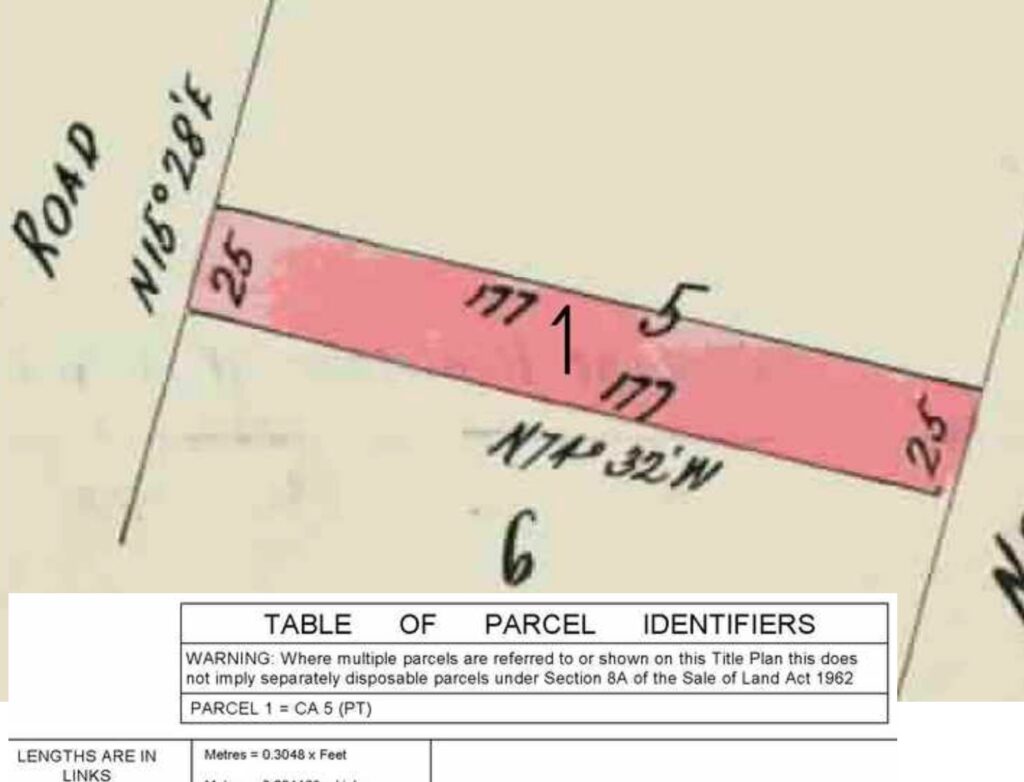Recently, we did one of our regular checks on two title boundaries and found something unusual for both.
A part of our due diligence process, we reference the satellite imagery on one of our paid portals. Then we compare to the title plan in the contract. We are accustomed to converting feet and inches to metres, but we uncovered a measurement that is pre-dates feet and inches.
The properties we identified were each in very old, established parts of Melbourne; South Melbourne and Williamstown.

Realising something wasn’t making sense with our feet to metres conversion, we leaned on a property lawyer for clarification. “Oh, I haven’t seen one of these in a while”, he exclaimed. “It’s in Links!”
What is a link?
“A link, also called a Gunter’s link, was a unit of length in the imperial system. Links were commonly used in measuring land in the twentieth century, and abbreviated with ln. Links and Chains were invented by Edmund Gunter, a professor of astronomy at Gresham College, London. He made the link as a low-technology piece of equipment that could survey small areas of land very accurately, whereas the chain could measure towns and large areas of land.” (Source: Wikipedia)

In the same week, we also noted a property that had references to an Old System Title. This is the title type that preceded Torrens Title for freehold properties.
Unlike Torrens title that registers the title itself, Old System Titles register the deed, (ie. the contract), as opposed to the specific title itself.
“The previous land registration system, based on the registration of deeds, did little to overcome the difficulties and uncertainties in proof of title because it was the deed, rather than the title, that was registered.” (Source: The Nature of Torrens Indefeasibility: Understanding the Limits of Personal Equities – Kelvin Low).
“The need to investigate title every time land was conveyed or otherwise dealt with meant that
parties had to incur expense in both time and money every time a transaction was
entered into. Due to the complexities of such investigation, purchasers also had
to abide a certain degree of risk that defects in the vendor’s title would not be
fully discovered in the investigation. The system of independent titles proposed
by Torrens obviated the costs involved in the investigation of title by overturning the common law rule of nemo dat quod non habet.”
Nemo dat quod non habet literally means “no one can give what they do not have”, and it is a legal rule.
The work to convert Old System Titles to Torrens Titles would have been considerable, and it changed the face of property transacting for the better. These days, “ownership of land is transferred by registration of a transfer of title, instead of by the use of deeds”, (as formerly done).
“The Registrar provides a Certificate of Title to the new proprietor, which is merely a copy of the related folio of the register. The main benefit of the system is to enhance certainty of title to land and to simplify dealings involving land.” (Source: Wikipedia).
Property history is fascinating and we always enjoy finding something new.

REGISTER TO OUR NEWSLETTER
INFORMATION
CONTACT US
1A/58 ANDERSON STREET,
YARRAVILLE VIC 3013
0422 638 362
03 7000 6026
CATE@CATEBAKOS.COM.AU
